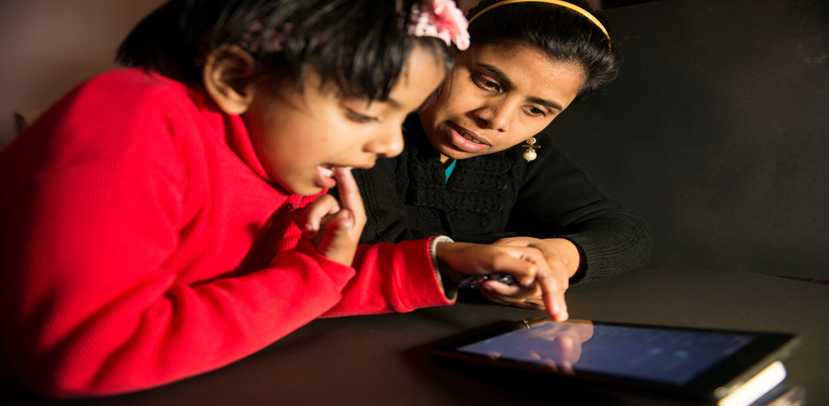
Caring and Raising a Digital Native
Caring and Raising a Digital Native
By Ajay Kumar Sinha
Introduction
Internet, which was somewhat a matter of exotic entertainment and/or a tool for professional work, has transformed into a commodity, like water supply or electricity in the recent years, especially after the Covid-19 pandemic. But with such a sudden and major technology change, the society as a whole and the different social institutions, did not get enough lead time to gradually adapt to the new reality and adopt the required etiquette and safety rules necessary for online life. It applies to many spheres where Internet is used, but the population that it has impacted most is the “children”, and their lives. It is important to discuss, understand and find a solution to the problems, if any, about the Online Safety and Online Well-Being of Children, as the Internet is now entrenched in the lives of children like toys, books and stationery. It is also necessary to understand that the children of today are “Digital Natives”, meaning they have been born in an era where the world and society is fully embedded with the Internet, as opposed to the adults who are “Digital Immigrants”, meaning those who were born in an era where there was no or insignificant presence of Internet in daily lives. So we are discussing the caring and raising of “Digital Natives” by “Digital Immigrants” and hence appropriate factoring needs to be done in the plan for vast difference in the perspectives of the “Digital Natives” and “Digital Immigrants” with a clear understanding that the perspectives of the population seeking the solution needs to take precedence. Though, when making a judgement and choice between growth and safety, it is always advisable to err on the side of safety, as any single incidence of breach of safety on the Internet has the potential of causing harm to the child to an extent that may stagnate and stall the growth of the child completely.
A dilemma
Any understanding and discussion on the issues around growth potential and safety of children while using the Internet revolves around two extremities:
- Internet is a treasure trove of abundance supplying opportunity and knowledge. A child should discover it with no limits imposed.
- Internet is a snake pit full of undesired content, it damages child’s mental health and causes arrested development. A child should never come close to this abomination.
Surely, neither of this extreme stand points should not be taken as a call to action. The truth is somewhere in a sweet spot between these two poles. Internet and computing open a pool of opportunities to learn, explore, communicate and have fun. At the same time a child should use such a powerful tool responsibly in order to avoid troubles, and teachers, parents and caregivers should take care of the child’s protection and support them. And, the process of protecting and supporting children in this endeavour would definitely also entail a lot of unlearning and learning for the teachers, parents and caregivers as well.
To present a comprehensible analogy, let’s think of Internet as of any appliance or tool we might use in our daily lives. The electricity, when used irresponsibly, can be deadly dangerous, but as soon as our children start to explore the world, we do not resort to candles or gas lamps – we teach kids the safety essentials and demonstrate how to use the electricity in a useful and harmless manner. But we do use protective plugs on electric sockets – just in case. Cars and other means of transportation are extremely dangerous to pedestrians if the latter don’t know road safety rules – and we also explain this to our children, avoiding the necessity to drive them into the woods to ensure maximum security. But when crossing the street we do hold their hand – just in case.
Solution
The same applies to Internet. Once you begin letting your child come around a computer or Internet, you should immediately start teaching them Online Safety and Online Well-Being. As Internet and related technologies are a very multifaceted concept (unlike electricity), there will be much more safety and security rules as well as guidelines to ensure mental and physical health while using them. With toddlers, it is a simple statement: “Don’t spend so much time at the computer, or your eyes will hurt”, or “Don’t play this game, it’s scary”. Step by step, the kid would continue to widen the scope of technologies s/he uses, while you would steadily add more rules to the playbook, in accordance with wider range of technologies available to your child.
Education is a factor of paramount importance when it comes to protecting your kid from Internet’s potentially negative influence. As with electric sockets, you need a technical means of protecting your child which would be able to ensure your kid’s safety and not let him go over the top even in you are not around.
The main thing you can do for your child is ensure s/he is systematically and correctly educated. The education should be such that even when you are not around, the child has learnt the skill to take care of his safety and well-being while using the Internet and related technologies. This skill to be safe is dependent on both – (a) Technological support and knowledge, (b) Behavioural conditioning to minimise risk. We undertake this exercise to work with teachers, parents and caregivers along with the children to ensure that this skill is imparted to the children. The skill is necessary for the children to be able to take advantage of the full potential that the Internet and related technologies offer to learn, grow and evolve.